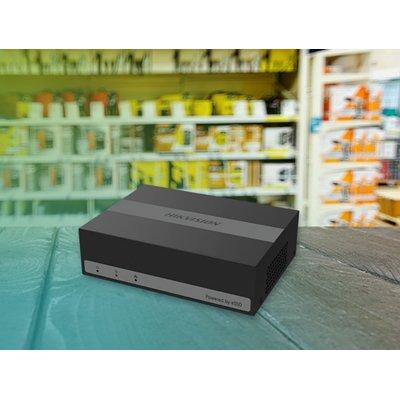Hikvision Hikvision eDVR Series (10)
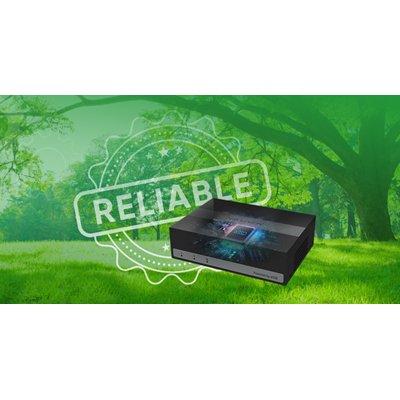
Stability is about delivering reliable and lasting performance – and that’s exactly what Hikvision’s new eDVR range does. With enduring storage and extremely low failure rates; the ability to withstand shocks and intense vibrations; and resilience in harsh environments, our eDVRs offer great long-term performance, maximized ROI, and sustainable value for customers. In recent years, there’re lots of discussions on what and how we produce and consume goods to ensure sustainable consumption and minimize the impact on the environment. One way of achieving this is to foster greener technologies, increase product durability, and extend product life, as stable-performing and longer-lasting products can reduce the volume of raw materials used to produce goods, as well as decrease emissions from production and transportation. To create greener and more sustainable products, Hikvision ensures that all products are built on the guiding principles of stability. This also applies to the eDVR series, which provides unrivalled durability and sustainability for years and years of smooth performance. Here are the three key factors that ensure the long-term stability and resilience of Hikvision’s new eDVR range. 1. Product longevity based on ‘enduring storage’ The eDVRs use eSSD chips instead of HDDs, which have multiple moving parts, such as rotating platters, spindles, and actuator arms. By eliminating mechanical moving parts from the storage drive, eSSD technology reduces internal wear and tear in the eDVR, and extends the product’s life cycle. This ensures that customers can maximize returns on their technology investments, and reduces carbon emissions related to replacing end-of-life equipment. 2. Product resilience through strict quality control To ensure product quality, we make sure that the raw materials that make up the eSSDs are of high and stable quality. Aside from this, meticulous product design and strict testing standards also help to ensure excellent performance of the product in different application scenarios, year-after-year. To test and assure the stability and durability of the eDVRs, Hikvision submitted the eSSD chips that power them for testing and accreditation by the JEDEC Solid State Technology Association. During the JEDEC evaluation, the eSSD chips were tested for resilience during transport. They were also repeatedly cycled between temperature extremes (-55 to 125°C), and they were placed in an environment of 130°C with 85% relative humidity to test their moisture resistance in high temperatures. The stability of the chips was also tested at a consistently high temperature (150°C). The eSSD chips passed all of the demanding JEDEC tests, demonstrating their resilience and extensive lifespan. 3. A new industry benchmark for shock and vibration resistance Traditional DVR hard disks can become unstable or corrupted in the event of intense shocks and vibrations – increasing the risk of unplanned downtime and video data loss. Hikvision’s new eDVRs, and the highly stable eSSD storage chips that power them, minimize these risks based on their ability to continue functioning normally in the event of drops and vibrations. In fact, Hikvision’s lab tests, conducted using a piece of equipment called a vibration table, show that the eDVRs were able to continue recording and showing video at an extremely high vibration intensity of 15Gs, at which point the experiment was ceased. This lab result shows sturdiness of at least 15 times more than some traditional DVR units with HDD storage, which typically withstand vibration intensity of up to around 1G. Thanks to its stability and durability, the eDVRs have set a new benchmark for the shock and vibration resilience of storage devices.
Add to Compare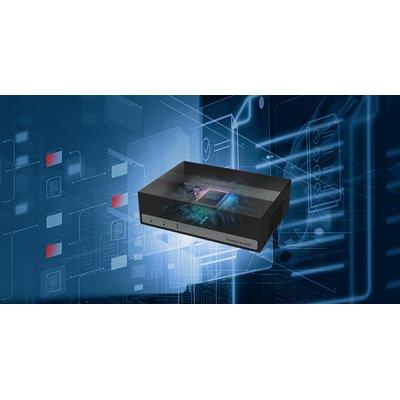
Recording high-quality video continuously for long periods of time has always been a challenge for the security industry. Hikvision’s new range of eDVRs uses Scene Adaptive Bitrate Control technology to maximize storage efficiency and capture incidents in crystal-clear detail. Video has traditionally been a storage-intensive medium. Conventional security video applications record video at a constant bitrate even at night or when nothing much is happening. That means that a lot of storage is wasted, without delivering much value for customers. Two attempts at making video storage more effective The security industry has come up with various technologies and approaches to try to make video storage as efficient as possible. These include: • Variable bitrate technology This looks at the scene and changes the bitrate according to the complexity – and the activity level. The plus point here is that the bitrate increases, and the image quality improves, when there’s actually something happening. The bad news is that storage requirements are totally unpredictable, giving operators no indication of how long footage will be stored before it is eliminated and ‘overwritten’. • Smart coding with a constant bitrate This uses low, but constant, image compression to increase predictability of storage and to maximise storage efficiency. However, the bitrate is always the same, and the quality may not be good enough to take effective action in the event of an incident. Overcoming the challenges with Hikvision Instead of these legacy storage approaches, Hikvision is using an innovative technology called Scene Adaptive Bitrate Control to boost storage efficiency. This technology is embedded in all of Hikvision’s new eDVRs, which use eSDD storage instead of HDD drives. To make storage as efficient as possible, the Hikvision eDVRs use variable bitrates – with more storage allocated temporarily for complex scenes. When there is nothing going on in the camera view, the bitrate is reduced dramatically, saving storage resources and extending the continuous recording time of the device. To ensure that the storage time is as predictable as possible, the eDVRs look at bitrate trends over the previous hours and days and allocates storage resources accordingly, in a properly measured way. This means that the device uses a variable bitrate in the short term, depending on the changing security scene, but a fixed code rate is used over the longer term to ensure video images are stored for the required timeframe before they are overwritten (typically for at least 2 weeks of continual recording). Furthermore, thanks to its exceptional storage efficiency, a 1TB eDVR can provide up to 8 weeks of storage, easily meeting customers’ storage requirements. A 1TB 4 channel model (iDS-E04HQHI-D) can store up to 4 weeks of continuously recorded footage by all channels in 1080P, while a DS-E04HGHI-E model supports up to 8 weeks of continuous recording in 1080p lite (960x1080 resolution). As an additional benefit, the Hikvision eDVRs offer highly stable image compression with good quality for security applications, ensuring that all incidents are captured in crystal clear detail. Real-world test results from an industrial park installation To showcase the storage efficiency of our eDVRs, we conducted a live test at an industrial park with a 2MP eDVR model (DS-E04HQHI-B). The eDVR received four video feeds, each with a resolution of 1080 pixels and a frame rate of 15 per second. During the test, we recorded complex scenes of our manufacturing facilities, including roadways, interior areas, entrance, and exit points. The recording bitrate automatically adjusted throughout the day and night based on the traffic and level of activity in all the covered zones. In spite of the variable bitrate, the Hikvision eDVR was able to allocate its 439 GB of total available storage in a very stable way. In the test, the device was able to store over 13 days of continuous recording, using around 33.7 GB. The storage utilization of the eDVR was highly stable and totally predictable, despite the varying bitrate during peak times at the manufacturing facilities.
Add to Compare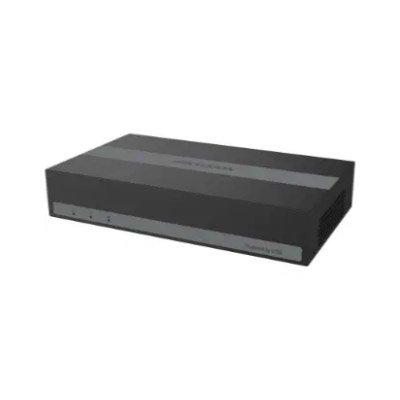
16 channels, Real Time / Timelapse / Event recording, Inbuilt Multiplexer, Built-in 1024 GB storage, 15; 25 (PAL) / 30 (NTSC) fps storage rate, H.265 Pro/H.265, 1080p resolution, PAL / NTSC, USB, G.711u; 16-ch via coaxial cable, 1-ch via HDMI, Recording, Synchronous Playback, 15; 25 (PAL) / 30 (NTSC), 235 x 147 x 47, ≤ 0.5 (with eSSD), 12 V DC, ≤ 9.5 W (with eSSD), -10 ~ +45 C (14 ~ 113 F), 10 ~ 90
Add to Compare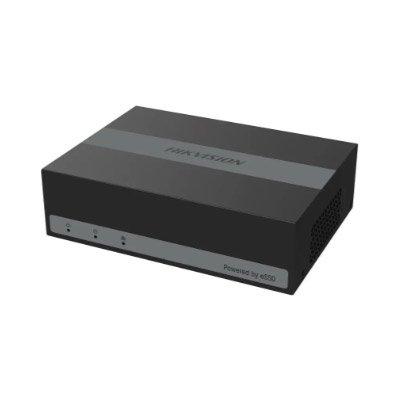
8 channels, Real Time / Timelapse / Event recording, Inbuilt Multiplexer, Built-in 1024 GB storage, 12, 15, 20, 25 (PAL) / 30 (NTSC) fps storage rate, H.265 Pro/H.265, 2 MP resolution, PAL / NTSC, USB, G.711u; 8-ch via coaxial cable, 1-ch via HDMI, Recording, Synchronous Playback, 12, 15, 20, 25 (PAL) / 30 (NTSC), 170 × 122× 46, ≤ 0.5 (with eSSD), 12 V DC, ≤ 8.2 W (with eSSD), -10 ~ +45 C (14 ~ 113 F), 10 ~ 90
Add to Compare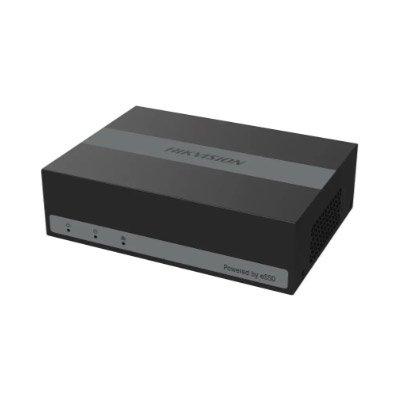
4 channels, Real Time / Timelapse / Event recording, Inbuilt Multiplexer, Built-in 1024 GB storage, 12, 15, 20, 25 (PAL) / 30 (NTSC) fps storage rate, H.265 Pro/H.265, 2 MP resolution, PAL / NTSC, USB, G.711u; 4-ch via coaxial cable, 1-ch via HDMI, Recording, Synchronous Playback, 12, 15, 20, 25 (PAL) / 30 (NTSC), 151 x 121 × 46, ≤ 0.5 (with eSSD), 12 V DC, ≤ 5.4 W (with eSSD), -10 ~ +45 C (14 ~ 113 F), 10 ~ 90
Add to Compare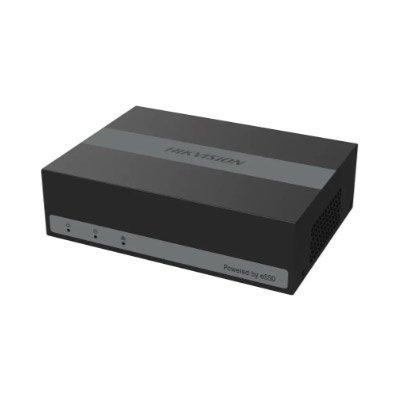
4 channels, Real Time / Timelapse / Event recording, Inbuilt Multiplexer, Built-in 1024 GB storage, 15; 25 (PAL) / 30 (NTSC) fps storage rate, H.265 Pro/H.265, 1080p resolution, PAL / NTSC, USB, G.711u; 4-ch via coaxial cable, 1-ch via HDMI, Recording, Synchronous Playback, 15; 25 (PAL) / 30 (NTSC), 151 × 121× 46, ≤ 0.5 (with eSSD), 12 V DC, ≤ 5.4 W (with eSSD), -10 ~ +45 C (14 ~ 113 F), 10 ~ 90
Add to Compare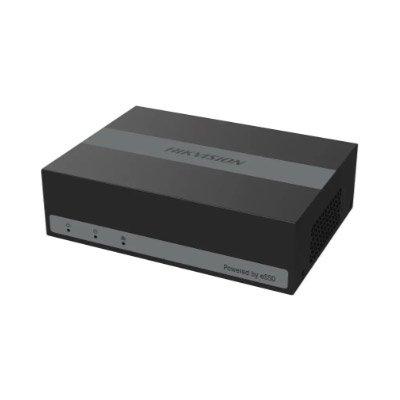
8 channels, Real Time / Timelapse / Event recording, Inbuilt Multiplexer, Built-in 1024 GB storage, 15 fps storage rate, H.265 Pro/H.265, 1080p resolution, USB, G.711u; 8-ch via coaxial cable, 1-ch via HDMI, Recording, Synchronous Playback, 15, 151 × 121× 46, ≤ 0.5 (with eSSD), 12 V DC, ≤ 6.2 W (with eSSD), -10 ~ +45 C (14 ~ 113 F), 10 ~ 90
Add to Compare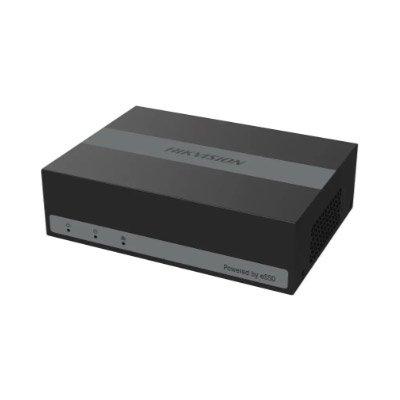
4 channels, Real Time / Timelapse / Event recording, Inbuilt Multiplexer, Built-in 1024 GB storage, 8, 12, 15, 18, 25 (PAL) / 30 (NTSC) fps storage rate, H.265 Pro/H.265, 5 MP resolution, PAL / NTSC, USB, G.711u; 4-ch via coaxial cable, 1-ch via HDMI, Recording, Synchronous Playback, 8, 12, 15, 18, 25 (PAL) / 30 (NTSC), 151 x 121 × 46, ≤ 0.5 (with eSSD), 12 V DC, ≤ 7.5 W (with eSSD), -10 ~ +45 C (14 ~ 113 F), 10 ~ 90
Add to Compare